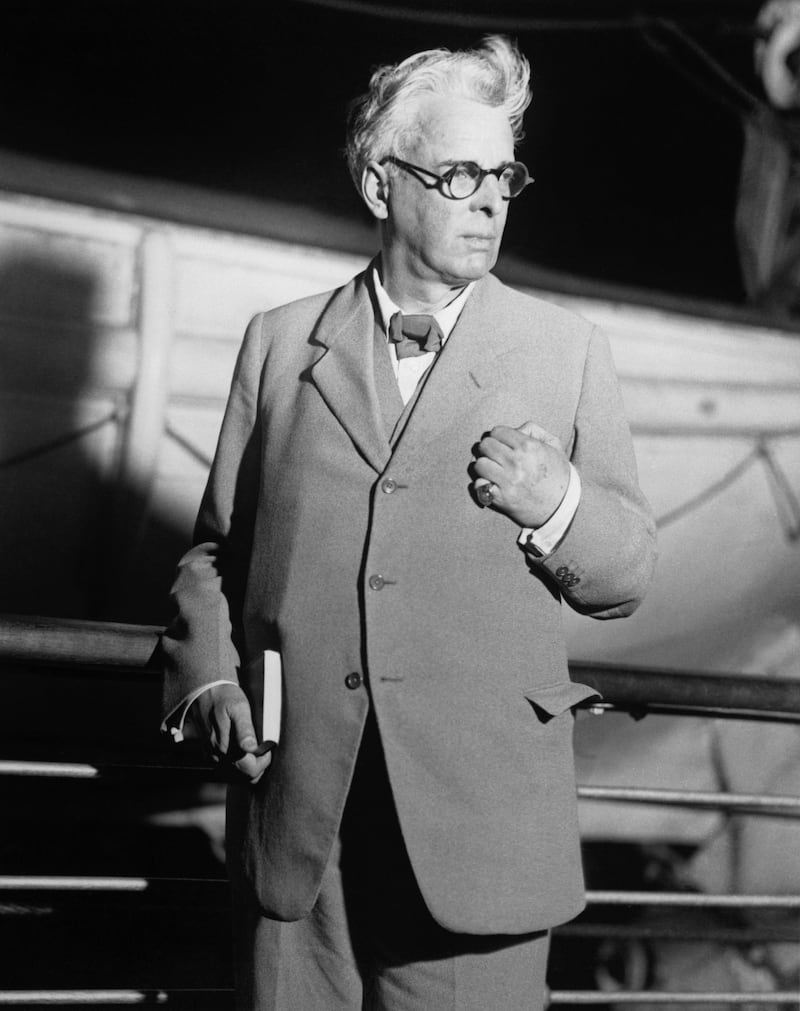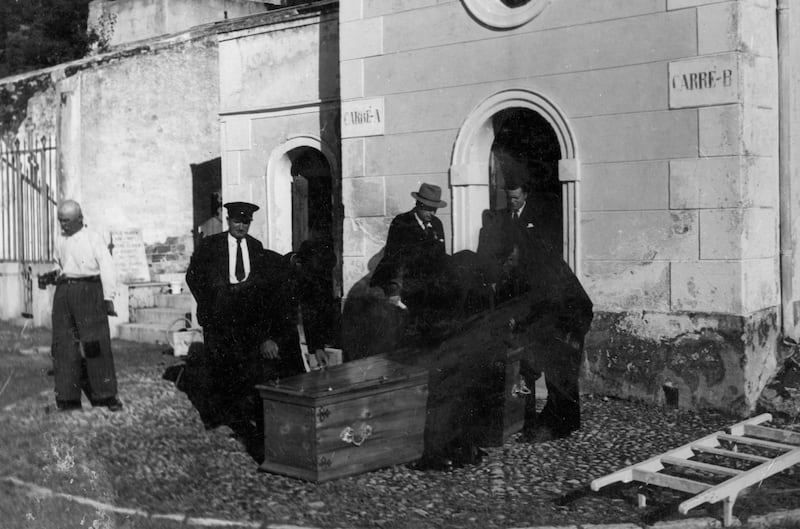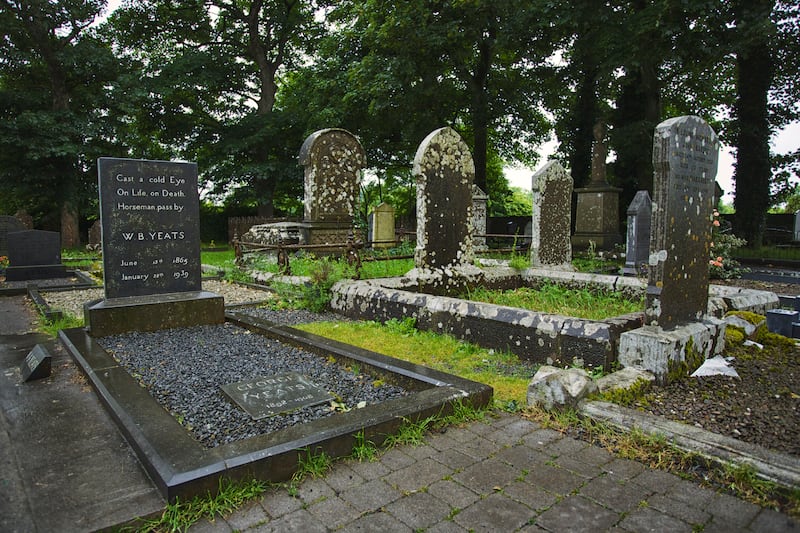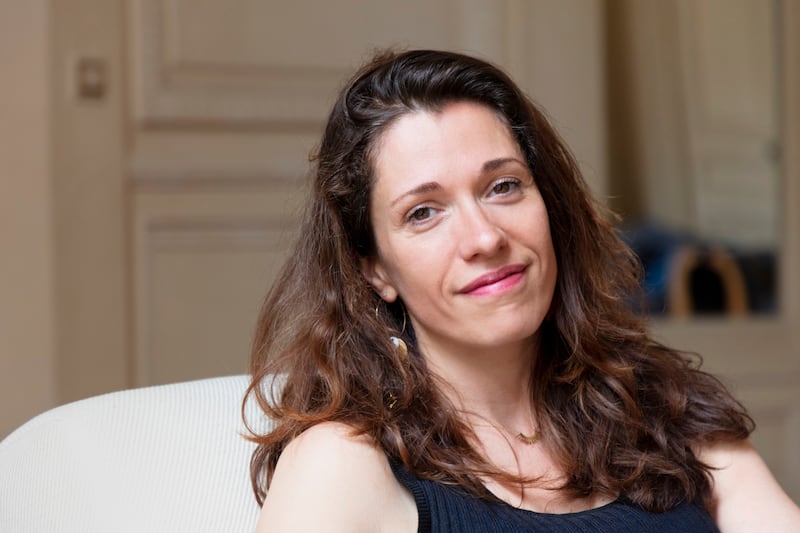“It is impossible to return the full and authentic remains of Monsieur Yeats,” wrote Bernard Cailloux, the French diplomat who was dispatched to Roquebrune-Cap-Martin, on the Côte d’Azur, 75 years ago to exhume and repatriate whatever was left of the Irish Nobel laureate, nine years after the poet’s death.
Somehow, in the run-up to the second World War, William Butler Yeats had been consigned to a pauper’s grave, then an ossuary, where bones were sorted by type: skulls with skulls; tibiae with tibiae, femurs with femurs. Were it so required, Cailloux continued, the local sworn pathologist “would be capable of reconstituting a skeleton presenting all the characteristics of the deceased”.
I quoted the previously secret internal correspondence of the French foreign ministry in an article in this newspaper on July 18th, 2015, one of the biggest scoops of my career.
Unknown to me, my report was read by a young French radio journalist with a powerful attachment to Ireland, Maylis Besserie. It was the starting point for her beautiful and original novel, Scattered Love (Les Amours Dispersées), which has just been published by Lilliput Press.
READ MORE
Besserie, a broadcaster at the France Culture radio station, researched Scattered Love like an investigative reporter. She immersed herself in Yeats’s work and read books by Roy Foster, Adrian Frazier, Joseph Hassett and others. She studied Irish mythology at the Centre Culturel Irlandais, in Paris, lingered in the Yeats exhibition at the National Library of Ireland and journeyed to Drumcliffe churchyard, in Co Sligo, where Yeats’s bones were purportedly reburied in 1948. She interviewed the caretaker of Roquebrune cemetery.

Besserie also interviewed Daniel Paris, the diplomat’s son who discovered in a trunk in his family’s chateau the documents detailing the transfer of Yeats’s alleged bones to Ireland. Paris took the papers to the Irish Embassy in the French capital. “If he had given the letters to the French, the documents would have gone straight to the archives and no one would ever have known,” Besserie says.
Everything disappears in the long run, so you can think, Oh well, who cares about what happened to the bodies? But, at the same time, nobody likes the idea of their loved one being in several places
— Maylis Besserie
In Besserie’s previous novel, Yell, Sam, If You Still Can (Le Tiers Temps), Samuel Beckett narrates the last months of his life. That book won the prestigious Prix Goncourt for a first novel and has been published in 15 languages. Both novels were brilliantly translated from French into English by the Sorbonne professor Clíona Ní Ríordáin.
Exhumation
The basic elements of Besserie’s second novel – the fate of Yeats’s bones, his unrequited love for Maud Gonne and her daughter, Iseult, and the poet’s fascination with spiritualism and the occult – are familiar to an Irish audience. Besserie’s originality was to think of the hapless French, and perhaps other nationalities, whose bones were probably taken to reconstitute a skeleton for removal to Ireland.
“I thought, What about those poor people?” Besserie says. “Everything disappears in the long run, so you can think, Oh well, who cares about what happened to the bodies? But, at the same time, nobody likes the idea of their loved one being in several places.”

In the novel, a small group of French people whose ancestors were buried near Yeats in Roquebrune cemetery band together to demand the exhumation and DNA testing of the remains in Co Sligo. (Though not stated in the novel, Yeats’s descendants reject the idea.)
If you end up in a mass grave, it is because something happened. It may be because of poverty, or stories hidden by the family because they were ashamed. When you disinter a body, you dig up those family secrets.
— Maylis Besserie
The Scattered comes to refer to the militant descendants as well as to their ancestors’ bones. Madeleine, a 50-year-old estate agent, is their ringleader. She is haunted by the knowledge that before her own mother was born, her then unwed grandmother gave birth to a stillborn baby girl following a botched abortion. The infant was placed in a mass grave at Roquebrune.
“Normally, a person is buried in the family tomb,” Besserie says. “If you end up in a mass grave, it is because something happened. It may be because of poverty, or stories hidden by the family because they were ashamed. When you disinter a body, you dig up those family secrets.”
Besserie has shown an uncanny ability to adopt the personas first of Beckett and now of Yeats. She slips phrases such as “fail better” and “terrible beauty” into her texts. But it is more than that. Her prose is permeated with their vocabulary and imagery.
Finding the voice of a long-dead writer “comes from your experience as a reader”, Besserie says. “You get this voice in your head, like music. Especially when it’s in a foreign language… Because I am a radio journalist I am very sensitive to sounds, to music, to rhythm. This affects my writing, because I feel the words in a soundly way. Yeats was the poet of visions. I do not forget the sounds, but I tried to have a very visual language, because it conveys the poetry in a more Yeatsian way.”

Besserie converted the writer’s thought patterns from English into French. Finding Yeats’s voice in French was particularly difficult, she says. As translator, Ní Ríordáin too found the Yeats book a challenge. “Yeats’s poetry is probably better known in Ireland than Beckett’s work,” she says. “The responsibility of carrying Yeats’s voice from French into English is huge.”
Rhythmic sentences
Besserie created long, rhythmic sentences, metered by commas. “Slowly this rhythm I found in French for Yeats became so strong inside me that I wasn’t even able to read other books at the time,” she says.
In the first part of the novel, Yeats’s ghost dwells on Maud Gonne, “the bee that fed me, the wasp that stung me”. He describes their first meeting, in January 1889. Gonne, the ghost recalls, “came in like a shadow. She slid and bore herself into my eye, between my eyelids which blinked against the dust.”
For Yeats, Besserie says, Gonne was “all women in one, the earth of Ireland, the goddess, strength, rebellion”.
Gonne hid her affair with the far-right politician Lucien Millevoye from him. “Yeats didn’t know about Millevoye. She had children and he was still waiting for her,” Besserie says. “I don’t judge any part of this relationship. Yeats had a masochistic streak that helped him write.” Gonne famously told Yeats, “You make beautiful poetry out of what you call your unhappiness and are happy in that. Marriage would be such a dull affair.”
Besserie loves the fact that Yeats and Gonne wrote to each other throughout their lives – “the fidelity of the link, because it lasted”. It was Gonne’s son, Seán MacBride, as Ireland’s minister for external affairs, who oversaw the transfer to Ireland of Yeats’s putative remains in 1948.

There was only one main voice – Beckett’s – in Besserie’s first book. She wanted two in the Yeats book: Madeleine, the French woman who leads the investigation on behalf of The Scattered; and the poet’s ghost. About two-thirds of the way through the book, their voices merge.
Poetry is a very sensual way of writing, very specific. It has to do with all the senses: the visions, the fragrance, hearing. It’s much more ghosty, evanescent, something in a blur
— Maylis Besserie
Madeleine’s senses are aroused in a Yeatsian way as she pores over archives in Dublin. “A clean smell of beard soap, of a clean-shaven face, of honeyed candle wax sprinkled with cologne” emanates from files. This is mixed with “the odour of berries, of wilderness, the scents of Ireland wrapped in sacred fragrances, fragrances of incense”.
Pseudo-erotic
There follows a pseudo-erotic scene in which the Frenchwoman feels transported “into the poet’s bed where warm exhalations, vapours of diaphanous skin, dripping with dew and desire, are stirring. She hears the whispering of women’s voices, the sweet voices of the night that address the poet by his initials, guide him with their breath.”
Besserie says the passage is about the power of poetry. “Poetry is a very sensual way of writing, very specific. It has to do with all the senses: the visions, the fragrance, hearing. It’s much more ghosty, evanescent, something in a blur, in a dreamy world which is different to the kind of writing you normally use in a novel.”

Besserie refers to Yeats’s “aphrodisiac words” and describes how his voice “fills their bodies with visions, with a thousand hands that touch them, a thousand mouths that make them shudder, make them tremble like leaves… pushes them to the limit with his fearsome words, his evil words that break down the last barrier, penetrating their skin without even touching them.”
Besserie compares Yeats to Victor Hugo. Both are national treasures, but Hugo was “a perfect French hero… wonderful and too much. You cannot really identify with him.” Yeats, on the other hand, “had weakness that we can love. Yeats is as great a genius as Hugo but in very different ways. He shows his sensitivity. I like the way he takes time to adjust and to make his own way in the world.”
Scattered Love is the second novel in Besserie’s Irish trilogy. The third, Francis Bacon’s Nanny, will be published in French on August 15th. This time the narrator is Bacon’s nanny, Jessie Lightfoot, who was a second mother to the tormented painter.
Besserie, a self-described workaholic, is married with three children. After completing three novels in five years, she recently adapted her Beckett novel, Yell, Sam, If You Still Can, for the stage. Beckett too wrote for radio and stage. Besserie does not intend to shift from novels to theatre. “I want to keep both,” she says.




















